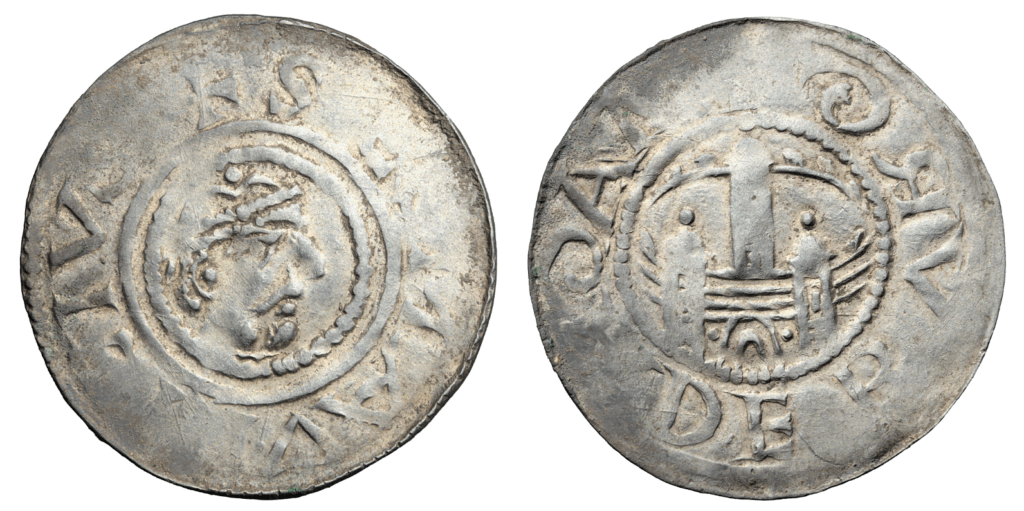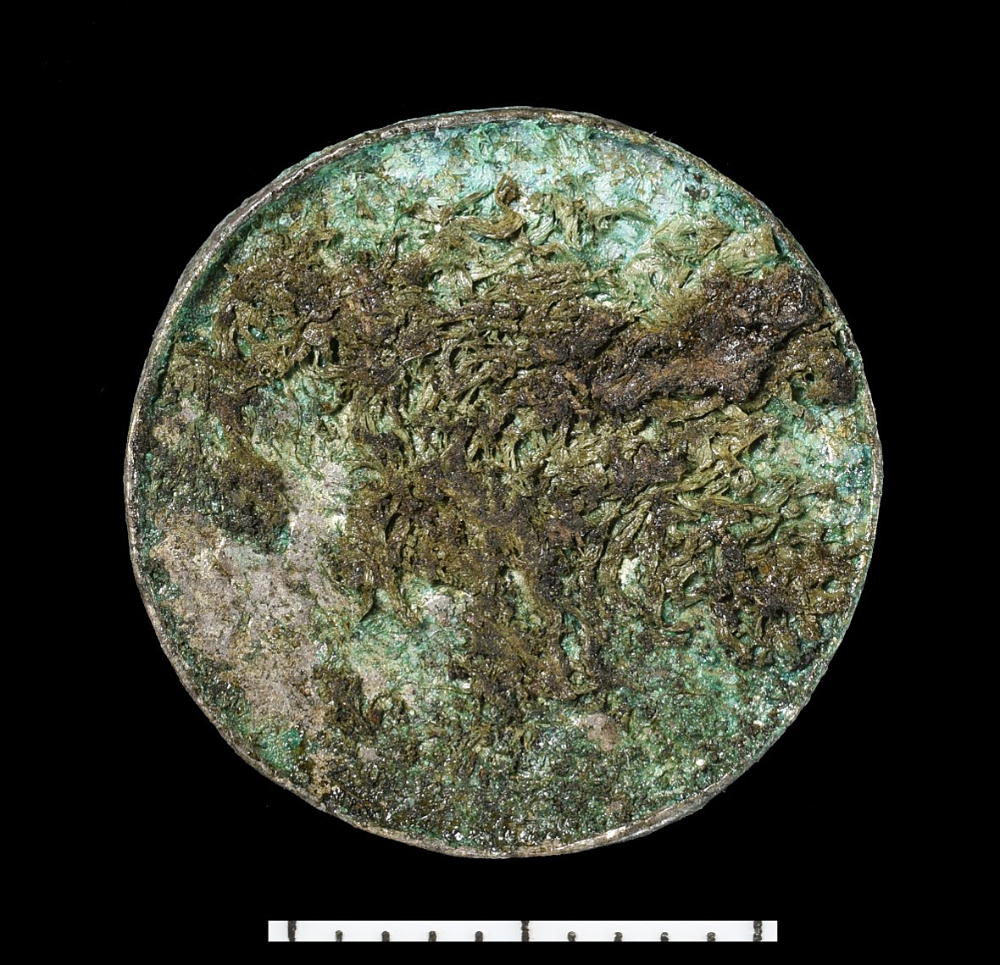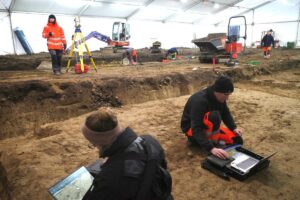During a forest reorganization project in Lübs, located in the Jerichower Land district of Germany, a collection of slightly displaced silver coins and a coin hoard were discovered. The hoard contains approximately 300 Magdeburg Denars and Hochrandpfennig coins, which were commonly used in the Elbe-Saale region during the 11th century.
A Well-Known Area for Historical Discoveries
The area to the east of the Elbe River, along the high bank between Gommern and Zerbst/Anhalt, has been regularly surveyed by volunteer archaeologists for many years, making it a well-known archaeological site. During a routine survey of land prepared for reforestation, two volunteers from the Saxony-Anhalt State Office for Monument Preservation and Archaeology discovered several silver coins.

Saxony-Anhalt Monument Preservation Office Official:
“These discoveries offer valuable insights into the economic and social structures of the 11th century.”
Coin Hoard: The 11th Century’s Wealth
Upon further examination, the volunteers identified a concentrated area with additional coins. Despite a few being displaced, most of the coins were found compactly within a round discoloration approximately 30 cm in diameter. The last coins were found at a maximum depth of 35 cm below the surface.
Coins Found in a Ceramic Vessel
The coins were buried inside a ceramic vessel, of which only the bottom portion remained fully intact. The vessel, along with sediment and additional silver coins, required restoration efforts to preserve the findings.

Restoration Workshop Expert:
“The vessel presented challenges for restoration, but the outcome was very rewarding with 273 well-preserved silver coins.”
The Coins and Their Significance
A total of 273 well-preserved silver coins weighing about 300 grams were recovered. Among them were 196 Denars, 65 Hochrandpfennig, and 12 Hochrand Obols. The oldest coin found was a Hochrandpfennig from Archbishop Gero of Magdeburg (1012-1023). The most common coins were Denars issued during the tenure of Hunfried (1032-1051), with some coins also featuring an early mention of Magdeburg in the inscriptions.
Archaeologist’s Note:
“The early Magdeburg mention on these coins provides fascinating insights into the city’s history during the 11th century.”
A Glimpse into 11th Century Economic Life
Most of the coins were minted during the mid-11th century, and the found Hochrandpfennig can be categorized into two types: Type 1 with a beam cross, and Type 2 with a cloverleaf cross. Both types feature a rear-formed wedge cross.
Cover Image Credit: The uncovered ceramic vessel with some of the coins. The two silver denarii can be dated to the time of Archbishop Hunfried. State Office for Monument Preservation and Archaeology Saxony-Anhalt, Frederike Hertel.





